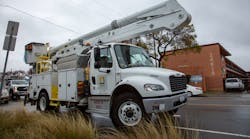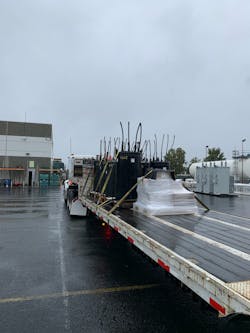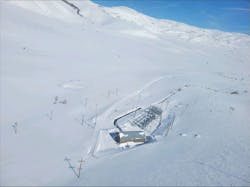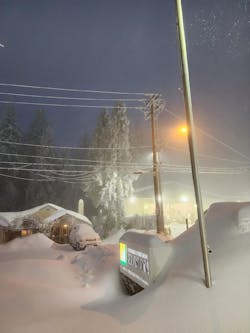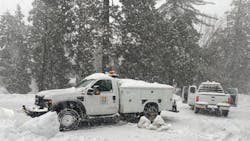Across America, lineworkers respond to severe weather emergencies year-round. In our two-part Storm Strategies series, we are highlighting two recent storm responses — winter storms in California and a tornado in Oklahoma.Not long ago in California, fallen trees toppled power poles during back-to-back winter storms. The storms inflicted 1,364 outages impacting 525,316 of the 5 million Southern California Edison (SCE) customers.
Before the first snowflake dropped, however, the utility was prepared for anything that Mother Nature could throw in the way of the line crews. “We knew that this storm was going to be significant, and that’s why we took several steps to ensure we could safely and reliably supply electricity to the communities we serve,” says Gabriela Ornelas, spokesperson for SCE.
Mobilizing Crews and Materials
Southern California Edison began mobilizing its incident management team on Feb. 21 before the storm’s forecasted arrival in the service area. To prepare, the company pre-deployed crews in areas expected to be hit the hardest, including the mountain communities of San Bernadino, California, and the Sierra.
“About 1,000 field crew members were on standby to respond to issues as they emerged,” she says.
Case in point: Grapevine, which has a mountain pass on I-5 connecting north and southern California was shut down during the storm. Because SCE serves two communities north of Grapevine — Tulare and Kernville — the utility transported additional equipment and supplies ahead of the storms.
“We worked very closely with local agencies to safely restore service and support affected customers,” she says. “We continued working together through the duration of the winter storms.”
Prioritizing Safety
The extreme weather conditions created hazards ranging from flooding to mudslides to avalanches.
“We were always in contact with our front-line crews and knew their location and any safety concerns as well as checked in with employees who live in evacuation and high-hazard areas,” Ornelas says.
SCE also checked available resources to ensure it had sufficient coverage to respond to storm impacts to its system and customers, both during the day and overnight. This helped the utility to continue its response to outages when weather persisted through the night and minimized impacts to SCE’s customers.
In addition to the crew members in the field, SCE’s Air Operations provided support to assess the extent of snow damage caused to electrical equipment when conditions were safe for flying. The team also assisted with restoration efforts in Lake Arrowhead and the Mono Basin area.
The accumulation of snow restricted the crews’ ability to safely access repair sites, leading to extended restoration times for some customers. In some areas, crewsalso encountered unsafe conditions due to heavy snowfall and low visibility.
Avalanche warnings in Mono County also affected restoration efforts because SCE requires avalanche conditions to stabilize and access roads to be cleared before crews can safely reach the work area. To restore service to its Bridgeport customers quickly and safely, SCE fed power from its Lundy Hydroelectric Powerhouse and eventually with the use of temporary diesel generators.
Evaluating the Storm’s Impact
While storms roll into SCE’s service territory often, the February 2023 storms were more severe, widespread and affected many of the utility’s customers and communities, from Catalina Island to Lake Arrowhead and from the Grapevine to Mammoth, California. In addition, these storms produced low-elevation snow — as low as 1,000 ft — in areas that don’t normally get this kind of precipitation and blizzard warnings for the Los Angeles and Ventura County mountains.
At the same time, however, the wet and snowy weather led to high moisture content on the ground, which helped with wildfire mitigation.
“These storms brought with them significant hazards and impacts to our customers, but an additional effect was that they brought precipitation to California’s parched vegetation,” Ornelas says. “Some areas experienced more than 300% of their average precipitation this winter and preliminary measurements show the Sierra snowpack is at about double the usual levels.”
Given the extreme nature of the weather and storms SCE has seen so far this year across its service area, its system held up well, Ornelas says.
“Our teams work hard during clear weather to harden our grid, and those infrastructure repair and replacement programs helped us minimize the impact to our customers,” she says. “That work is never done, and we’ll continue working to ensure we can deliver safe and reliable electricity to our customers and communities, while keeping our team members safe.”
Amy Fischbach ([email protected]) is the Field Editor for T&D World magazine.
